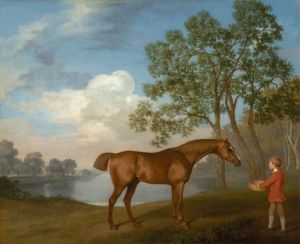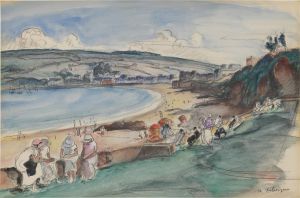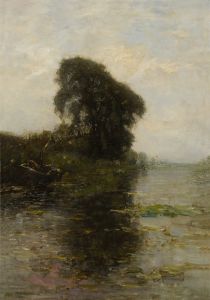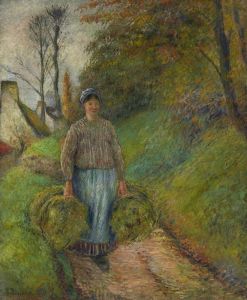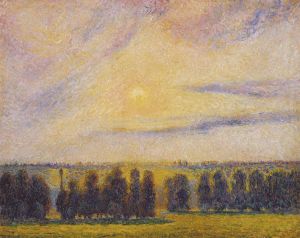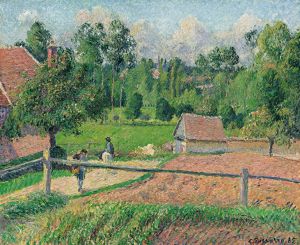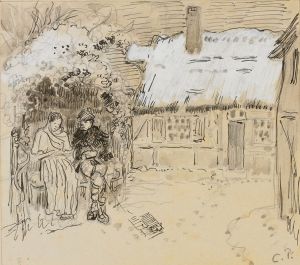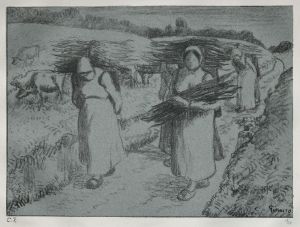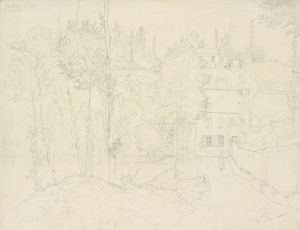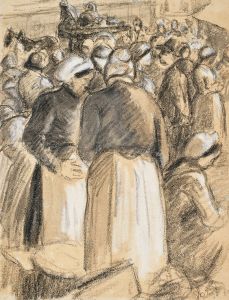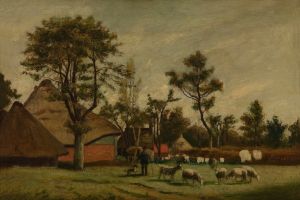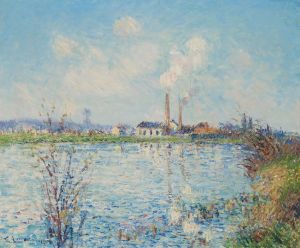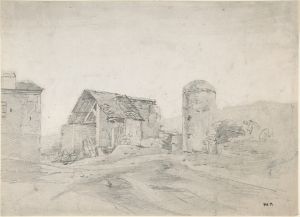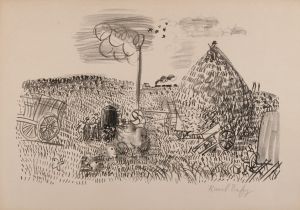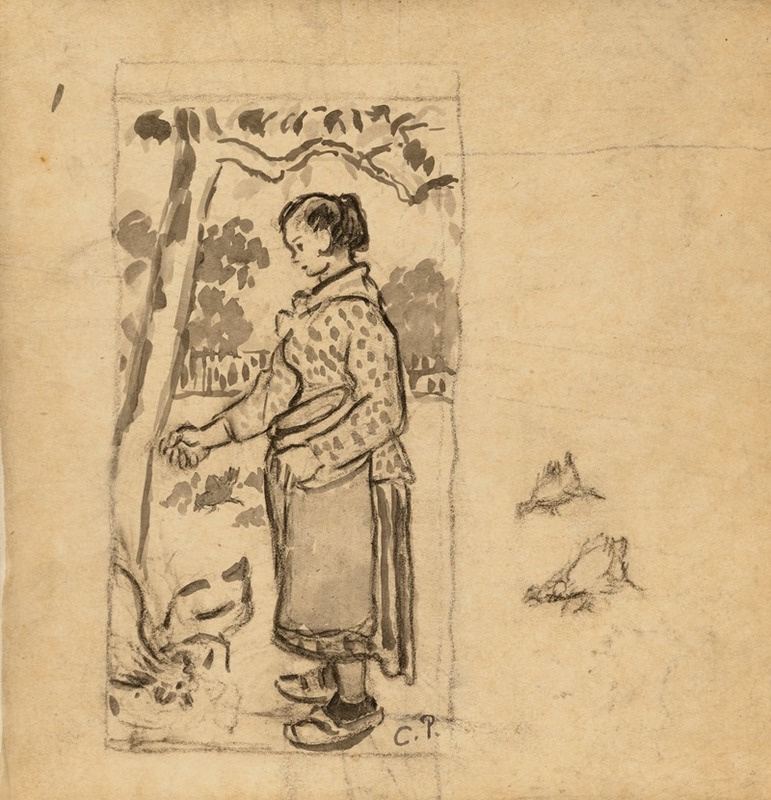
Femme aux poules
A hand-painted replica of Camille Pissarro’s masterpiece Femme aux poules, meticulously crafted by professional artists to capture the true essence of the original. Each piece is created with museum-quality canvas and rare mineral pigments, carefully painted by experienced artists with delicate brushstrokes and rich, layered colors to perfectly recreate the texture of the original artwork. Unlike machine-printed reproductions, this hand-painted version brings the painting to life, infused with the artist’s emotions and skill in every stroke. Whether for personal collection or home decoration, it instantly elevates the artistic atmosphere of any space.
"Femme aux poules" (translated as "Woman with Chickens") is a painting by the French artist Camille Pissarro, a leading figure in the Impressionist movement. Created in 1872, this work exemplifies Pissarro's dedication to rural themes and his interest in depicting the everyday lives of peasants. The painting portrays a woman tending to chickens in a natural, outdoor setting, reflecting Pissarro's focus on the harmonious relationship between humans and nature.
Pissarro was known for his ability to capture the subtleties of light and atmosphere, and "Femme aux poules" is no exception. The composition is characterized by its soft, naturalistic palette and loose brushwork, hallmarks of the Impressionist style. The scene is rendered with a sense of immediacy and intimacy, emphasizing the simplicity and dignity of rural life. Pissarro's choice of subject matter aligns with his broader artistic philosophy, which sought to elevate the everyday experiences of working-class individuals.
The painting was created during a pivotal period in Pissarro's career. By 1872, he had fully embraced the Impressionist approach, moving away from the more traditional techniques of his earlier works. This period also marked his return to France after spending time in London during the Franco-Prussian War (1870–1871). Upon his return, Pissarro settled in Pontoise, a rural area near Paris, where he found inspiration in the surrounding countryside and its inhabitants. "Femme aux poules" reflects the influence of this environment on his work.
As with many of Pissarro's paintings, "Femme aux poules" demonstrates his commitment to portraying rural life with authenticity and respect. His depictions of peasants and agricultural scenes were informed by his political beliefs; Pissarro was an anarchist who sympathized with the struggles of the working class. However, his works do not romanticize or idealize rural life but instead present it with a sense of realism and humanity.
The painting is part of a broader body of work in which Pissarro explored similar themes, often focusing on the daily activities of rural communities. His approach to these subjects influenced other Impressionist artists and contributed to the movement's emphasis on modern life and ordinary people.
Today, "Femme aux poules" is recognized as an important example of Pissarro's contributions to Impressionism and his ability to capture the beauty and significance of everyday moments. The painting is held in a private collection, and its exact provenance and exhibition history are not widely documented.





